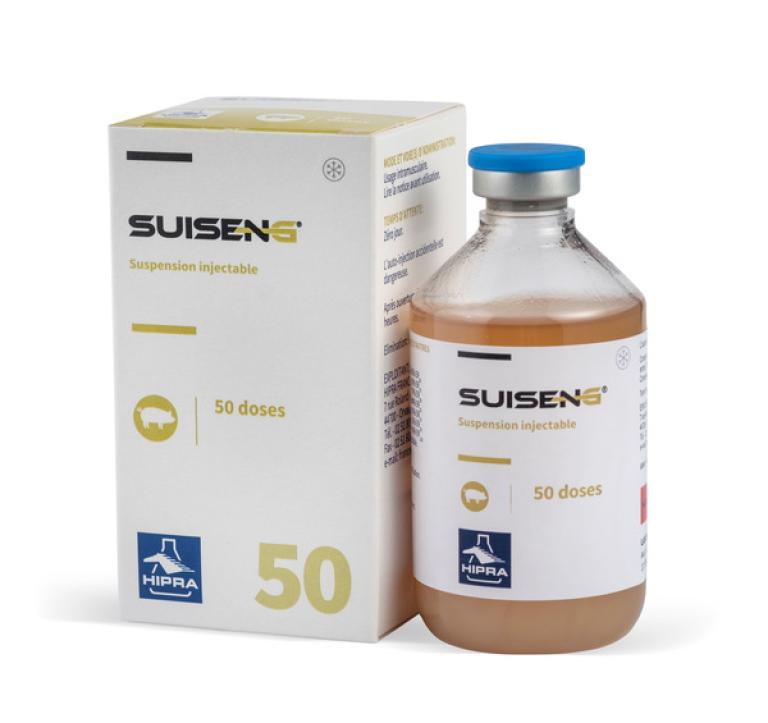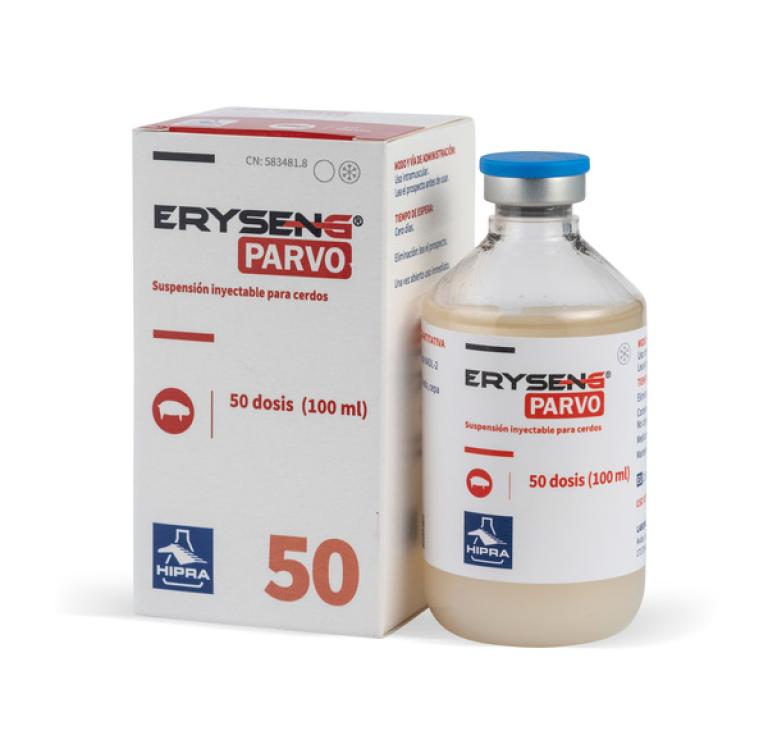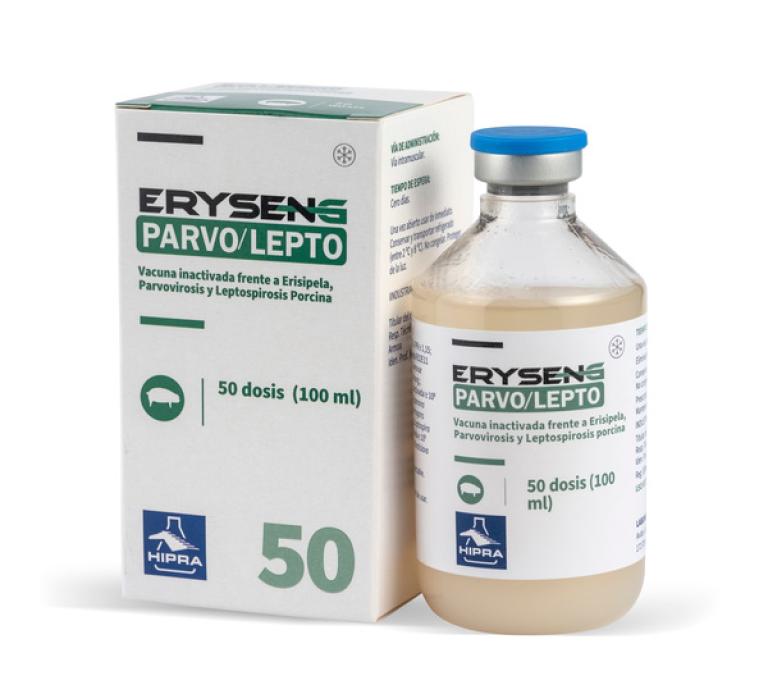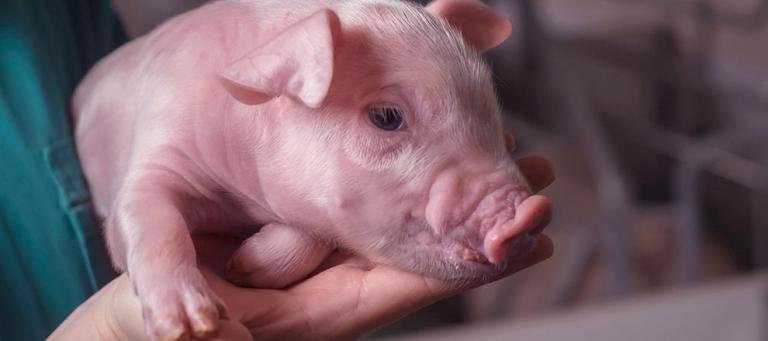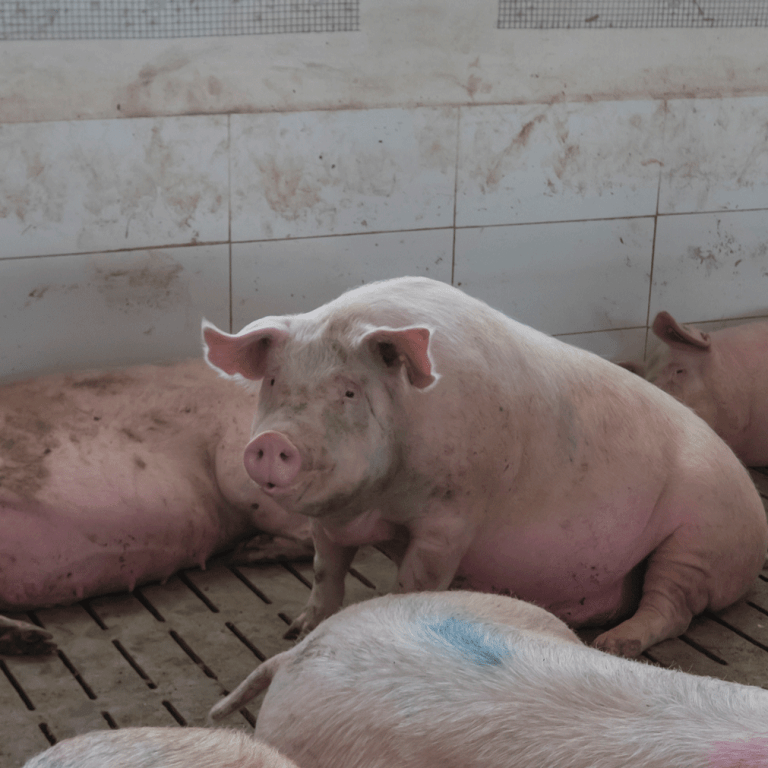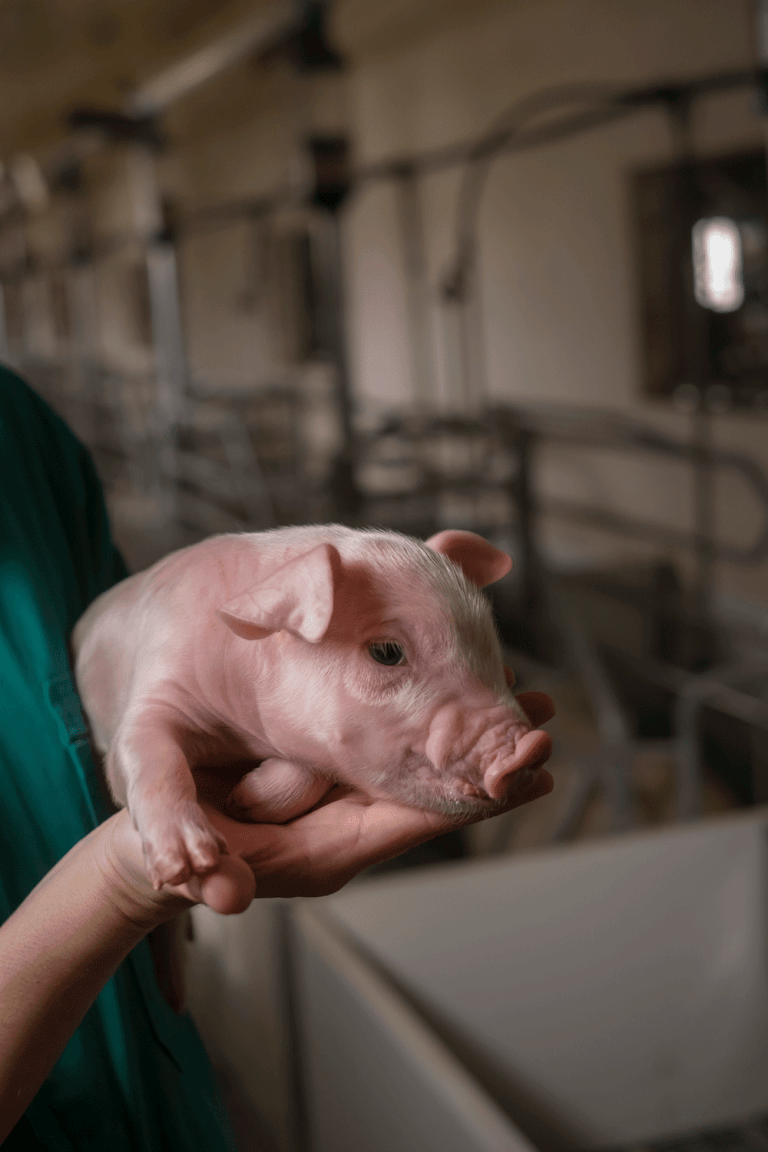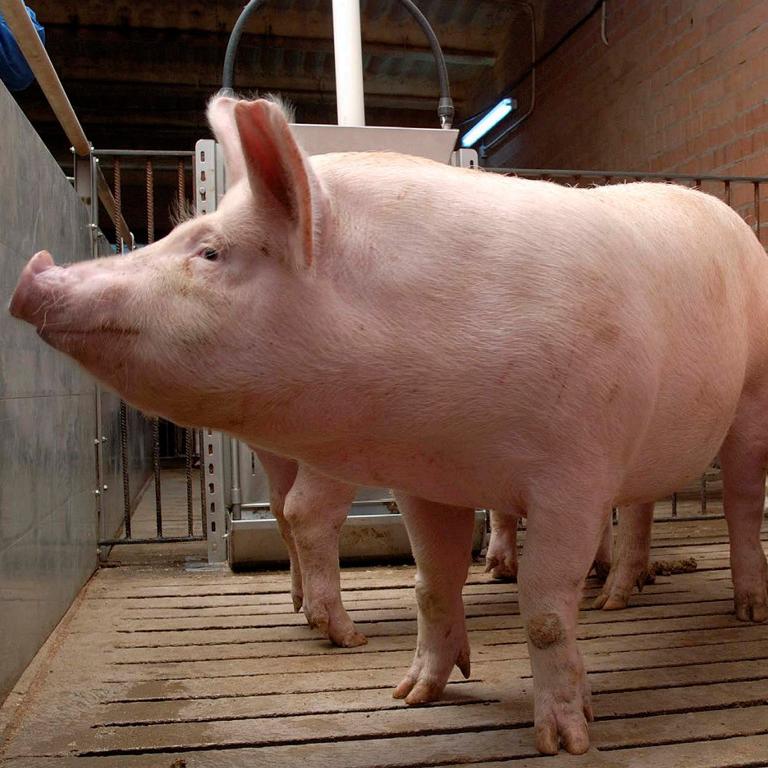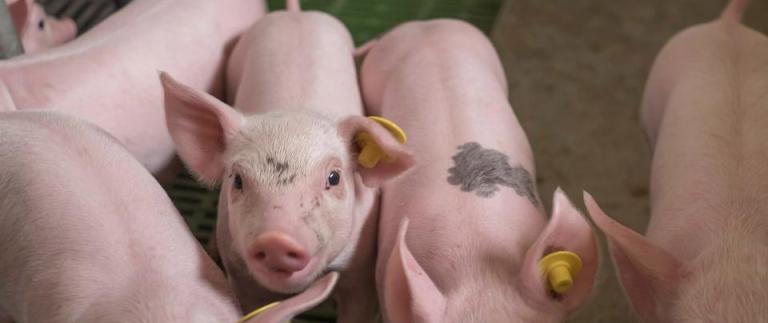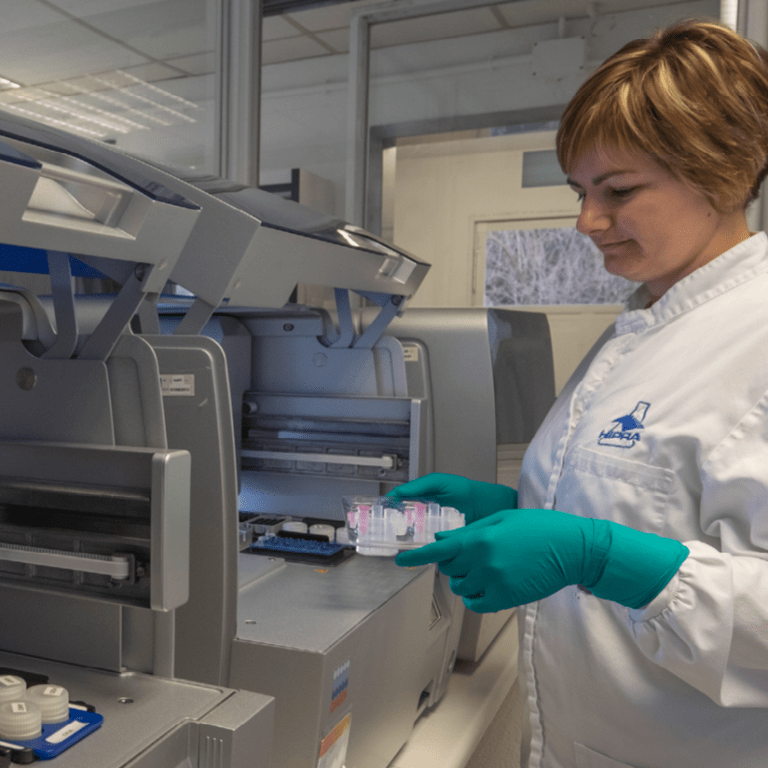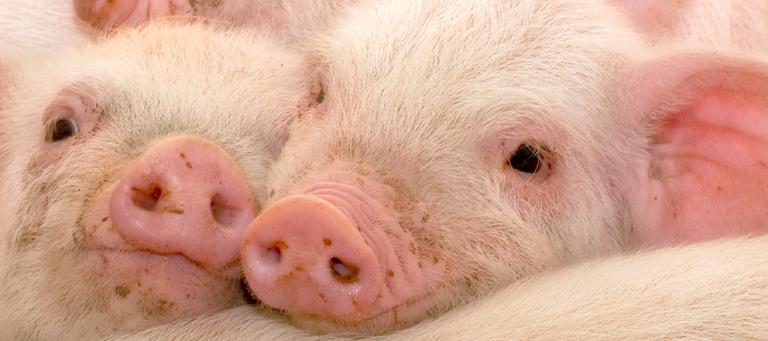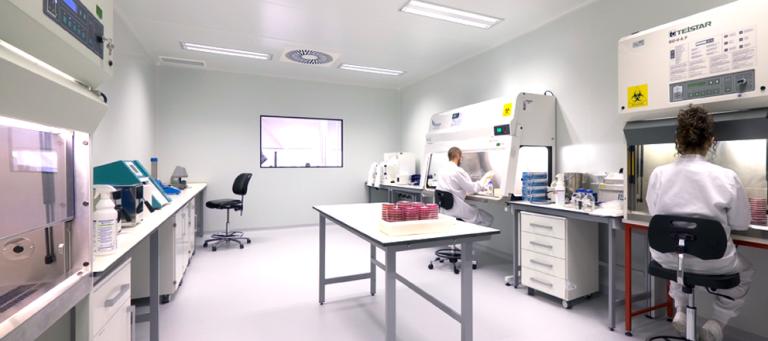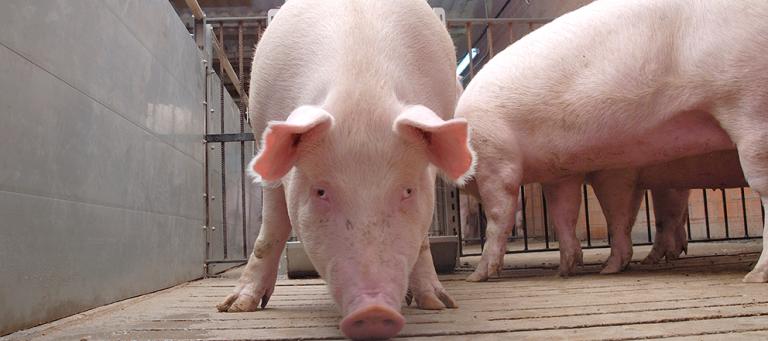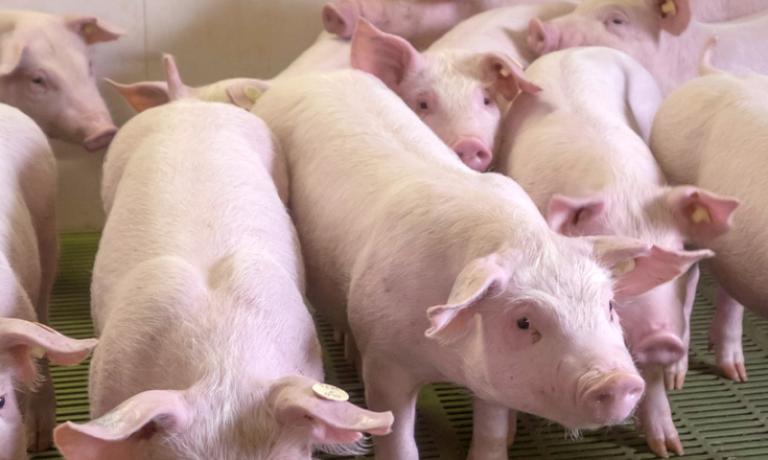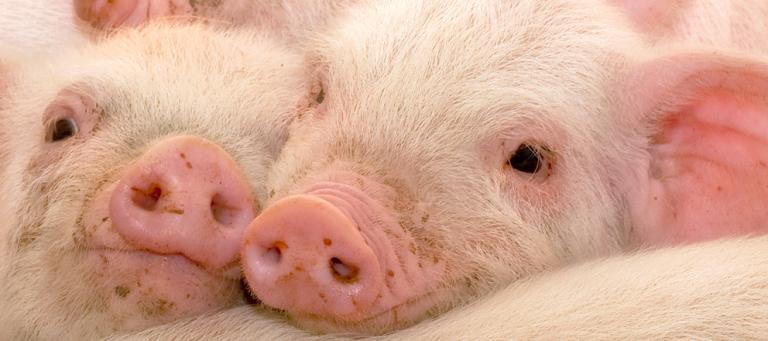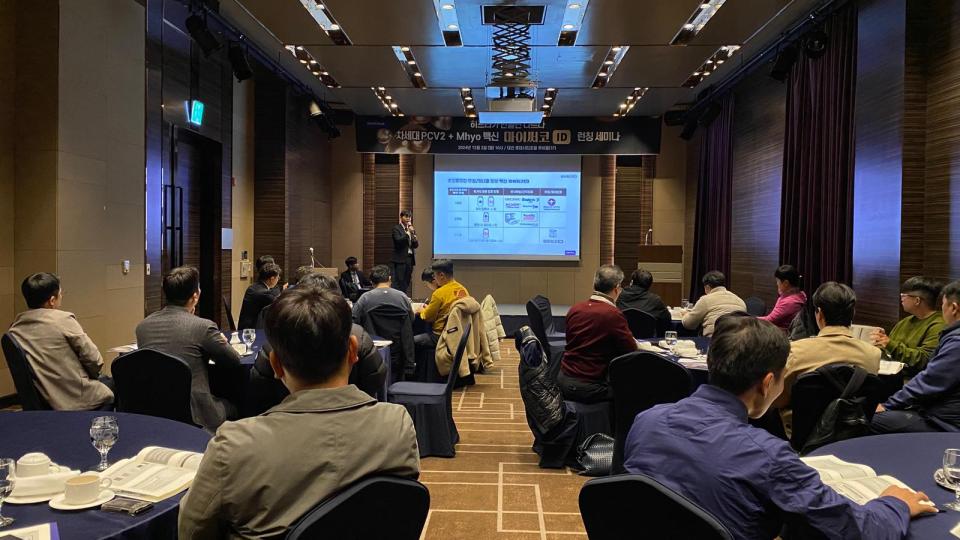It is thought that PRRS virus has a strongly restricted tropism for only those sub-populations of macrophages found in lungs, placenta and lymphoid organs that display two specific glycoproteins: Sialoadhesin and CD163.
It seems that the virus cannot replicate in monocytes in circulation or resident dendritic cells in the lungs. However, recent studies point out that PRRS virus could replicate in other subtype of macrophages or dendritic cells. Initially, virus replication occurs in local permissive macrophages and then spreads to the lungs and lymphoid organs, such as the tonsils and lymph nodes, and less consistently, to other tissues. The virus can be detected in blood (viraemia) within hours (12-24h). The length of viraemia is strongly influenced by the strain and the animal’s age. Thus, viraemia may extend for several weeks in piglets, whereas in adult pigs it may last for only a few days.
In lungs, the predominant differentiated cells that support PRRS virus replication are pulmonary alveolar macrophages and pulmonary intravascular macrophages. The virus compromises their functions and provokes an inflammatory cell infiltration resulting in interstitial pneumonia which, in conjunction with enlarged lymph nodes, is the common lesion in a PRRS virus infection. Microscopically, lesions can be also observed in the uterus of sows and in the testicles of boars. Clinical disease and lesions due to the PRRS virus infection occur by a variety of mechanisms that include apoptosis of infected and noninfected macrophages, induction of polyclonal B-cell activation and induction of inflammatory cytokines.
Among other causes, the severity of clinical signs strongly depends on the infecting strain, the presence of concurrent infections, the host’s immune status, and the age of the pig.
In viraemic pregnant sows, it is known that PRRS virus can infect foetuses, reaching high titers in them. The virus crosses the placental barrier most efficiently in late gestation (after day 70, approximately). Recent studies have indicated that the endometrium and the placenta are involved in the PRRS virus passage from sow to foetus and that foetal death is caused by virus replication in the endometrial and placental tissues. As a result, PRRS virus can cause abortion or affect the viability of a variable percentage of the foetuses.

The following list shows a simplified summary of the clinical signs. Obviously, the full list of clinical signs does not appear in all infected animals. Moreover, during an outbreak, not all infected animals show clinical signs.
SOWS:
- General:
- Inappetence, depression and lethargy.
- Mild fever.
- Null or low mortality (1-4%), except for severe cases: i.e. highly-pathogenic strains (Asia).
- Other: coughing and respiratory signs, cyanosis of the ears and vulva, etc.
- Reproductive failure:
- Late-term abortions.
- Premature farrowing (more than 2-3 days early).
- Increases in number of: partially or completely mummified foetuses (large size; they usually die in the last weeks of pregnancy), born dead, stillborn and weak-born piglets.
- Decrease in number of live-born piglets.
- Other: irregular returns to oestrus, vulvar discharges, etc.
SUCKLING PIGLETS:
- General:
- Less viable, weak.
- Increase in preweaning mortality due to: piglets prematurely born, lethargy, starvation, splay-leg, dyspnoea, etc.
- Respiratory disease:
- Increased susceptibility to respiratory and systemic co-infections such as Glässer.
WEANERS AND GROWERS:
- General:
- Mild-to-high fever.
- Inappetence and lethargy.
- Weight loss.
- Losses in productivity parameters: worse average daily gain and feed conversion ratio.
- Increased mortality.
- Respiratory disease:
- Mild coughing, sneezing, dyspnoea.
- Increase in secondary infections (respiratory and systemic): bronchopneumonia (B. bronchiseptica or P. multocida), Glässer, septicaemias (S. suis, S. cholerasuis), circovirosis, enzootic pneumonia, etc. As a consequence of the co-infections, an acute extensive consolidating pneumonia can be observed.
BOARS:
- General:
- Inappetence, depression and lethargy.
- Mild fever.
- Weight loss.
- Respiratory clinical signs:
- Null or low mortality, except for severe cases.
- Other disorders:
- Loss of libido.
- Reduction in semen quality and quantity: reduced motility, increase in morphoanomalies and acrosomal defects.
- Poor litter sizes.
The highly-pathogenic PRRS virus (HP-PRRSV) strains which emerged in China in 2006 and have since spread throughout Asia should be considered as a totally separate entity; the range of symptoms seems to be wider, affecting the kidneys, liver and spleen, and the disease can be far more severe, with abortion rates of up to 50% and mortality rates of over 10% in adult pigs.





